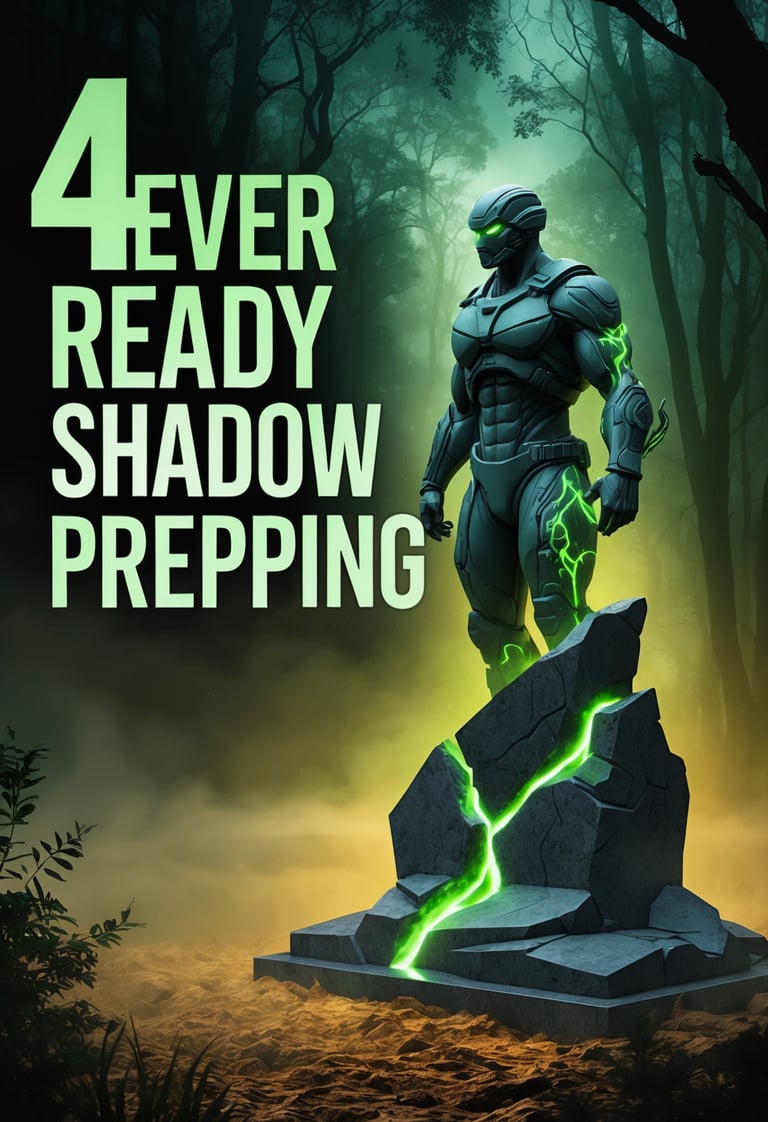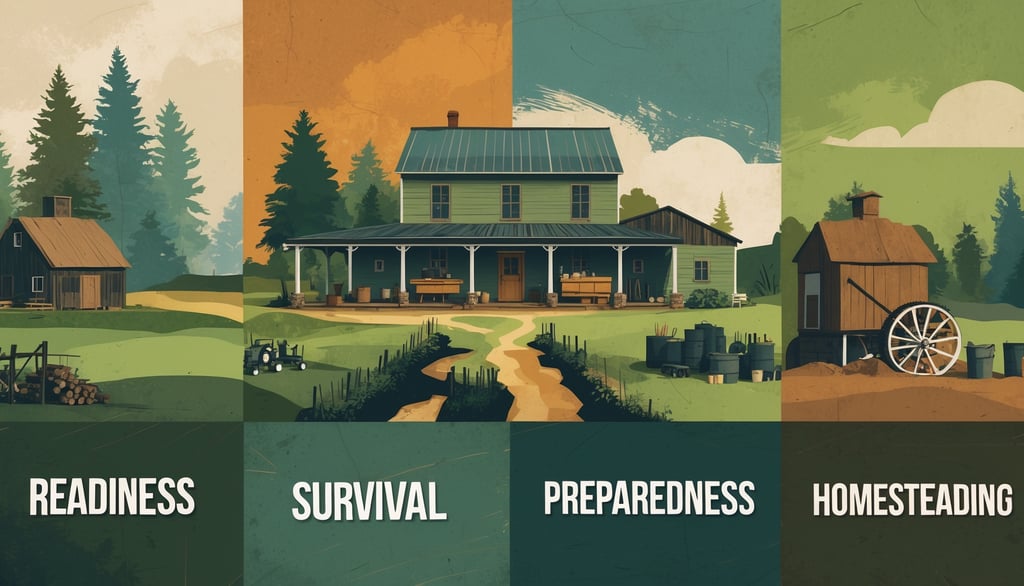Ideological Pathways for Survival and Thrivation
A Comparative Analysis
4FORTITUDER - READINESS, SURVIVAL, PREPAREDNESS, HOMESTEADING
Ideological Pathways for Survival and Thrivation: A Comparative Analysis
Introduction
When the fabric of society frays, when resources become scarce, and when uncertainty dominates the landscape, the question is not merely how to survive—but how to thrive. Survival is a short-term game; thrivation is the long war. Different groups adopt varying ideological models for resilience, security, and prosperity. Some prioritize community, others embrace aggression, and some seek self-sufficiency with minimal outside influence.
This article compares and contrasts five survival models, analyzing their strengths, weaknesses, and long-term sustainability. The three core models—Commune Living, Werewolf Prepping, and the Homestead Model—offer different approaches to resource acquisition, security, and societal structure. Two additional models will provide further insight into alternative survival philosophies.
Commune Living: Strength in Unity
Commune-based survival is centered on cooperation, pooled resources, and shared labor. The idea is simple: survival is easier with numbers, and a well-organized group can thrive where individuals might struggle.
Strengths: Shared resources reduce individual burden. Skill specialization allows efficiency in food production, defense, and logistics. Emotional and psychological support is stronger in a community.
Weaknesses: Requires absolute trust, strong leadership, and conflict resolution systems. Communes are vulnerable to infiltration, internal disputes, and freeloaders. The larger the group, the harder it is to remain undiscovered.
Sustainability: With the right governance structure, commune living can be highly sustainable, especially when supported by agricultural self-sufficiency and cooperative defense strategies.
Werewolf Prepping: Predatory Survivalism
Werewolf Prepping operates on the philosophy that stockpiling large amounts of supplies is unnecessary when you can take them from weaker groups. Instead of growing food or building long-term infrastructure, the focus is on tactical advantage, mobility, and striking at the right moment.
Strengths: Minimal need for long-term food storage, allowing for a more mobile and adaptable approach. Tactical training and stockpiling weapons create a formidable offense.
Weaknesses: Highly dependent on other groups for survival. A breakdown in law and order is necessary for this model to function. Morally and ethically questionable, increasing the likelihood of resistance and targeted elimination by better-prepared groups.
Sustainability: Not viable in the long term unless blended with another model. Once easy targets are exhausted, competition among other predatory survivalists could lead to rapid collapse.
The Homestead Model: Self-Sufficiency and Trade
The homestead model is built on self-sufficiency, with families or small groups living on isolated farms. The goal is to be far enough apart for privacy but close enough to trusted allies for trade and defense.
Strengths: Provides long-term food security and a stable foundation for rebuilding post-collapse. Strong independence prevents reliance on external supply chains. Well-established homesteads can serve as economic and trade hubs.
Weaknesses: High initial investment in land, equipment, and knowledge. Requires a balance between isolation and strategic alliances. Vulnerable to predatory models like Werewolf Prepping.
Sustainability: One of the most sustainable survival models, provided communities can manage security and maintain agricultural productivity.
The Mobile Nomad Model: Adaptability Over Stability
Nomadic survivalists reject the idea of static living spaces, choosing instead to stay constantly on the move, avoiding threats, and seeking opportunities as they arise.
Strengths: Difficult to track or target. Adaptability allows for opportunistic resource gathering and seasonal migration to optimize conditions.
Weaknesses: Lack of long-term infrastructure means no permanent base for food production. Requires extreme physical endurance and strategic planning.
Sustainability: Limited sustainability unless combined with other models (e.g., seasonal homesteading, temporary communal gathering points, or controlled raiding similar to Werewolf Prepping).
The Fortress State Model: Militarized Isolationism
This model involves an ultra-secure, heavily fortified location, often with a hierarchical structure that ensures strict governance, order, and resource control. Whether in a repurposed military facility or a fortified rural compound, the Fortress State prioritizes controlled access, strong internal discipline, and a clear command structure.
Strengths: Nearly impervious to external threats. Centralized leadership ensures operational efficiency. Stockpiling and controlled agriculture allow for long-term sustainability.
Weaknesses: Requires extreme investment in fortification and security. Risk of power struggles, resource mismanagement, and eventual stagnation due to isolation. Perceived as a high-value target for hostile groups.
Sustainability: Long-term survival depends on leadership integrity, resource renewal, and internal cohesion. Strong external alliances may be required to prevent overreach or stagnation.
Comparative Analysis: Strengths, Weaknesses, and Long-Term Viability
Each of these survival models offers distinct advantages and drawbacks. Choosing the right one depends on available resources, ethical considerations, and long-term goals.
Best for Security: The Fortress State Model
Best for Adaptability: The Mobile Nomad Model
Best for Long-Term Sustainability: The Homestead Model
Best for Immediate Survival in Collapse: Werewolf Prepping
Best for Group Cohesion and Shared Survival: Commune Living
Practical Concepts to Consider and Apply
Strength comes in different forms—mobility, isolation, numbers, or fortification.
Every model requires trade-offs between security, sustainability, and ethical concerns.
The best survivalists blend models instead of committing to just one.
Weaknesses of one model can be countered by strategic integration with another.
The greatest threats are not external but internal—bad leadership, division, and complacency.
Trust and alliances will define survival far more than stockpiled resources.
Ethical considerations matter—opportunism might work short-term but invites long-term consequences.
"The greatest wealth is to live content with little, for there is never want where the mind is satisfied." – Plato
"He who wishes to be rich in a day will be hanged in a year." – Leonardo da Vinci
Conclusion
Survival is not simply about brute force, nor is it about blind optimism in communal living. It is about strategic choices, adaptability, and the ability to manage both resources and human nature effectively. The best survivors do not merely react; they plan. They understand that no single model is perfect, and the key to true thrivation lies in selecting, modifying, and evolving the best aspects of these survival pathways.
The future belongs to those who prepare—but more importantly, to those who prepare wisely.




